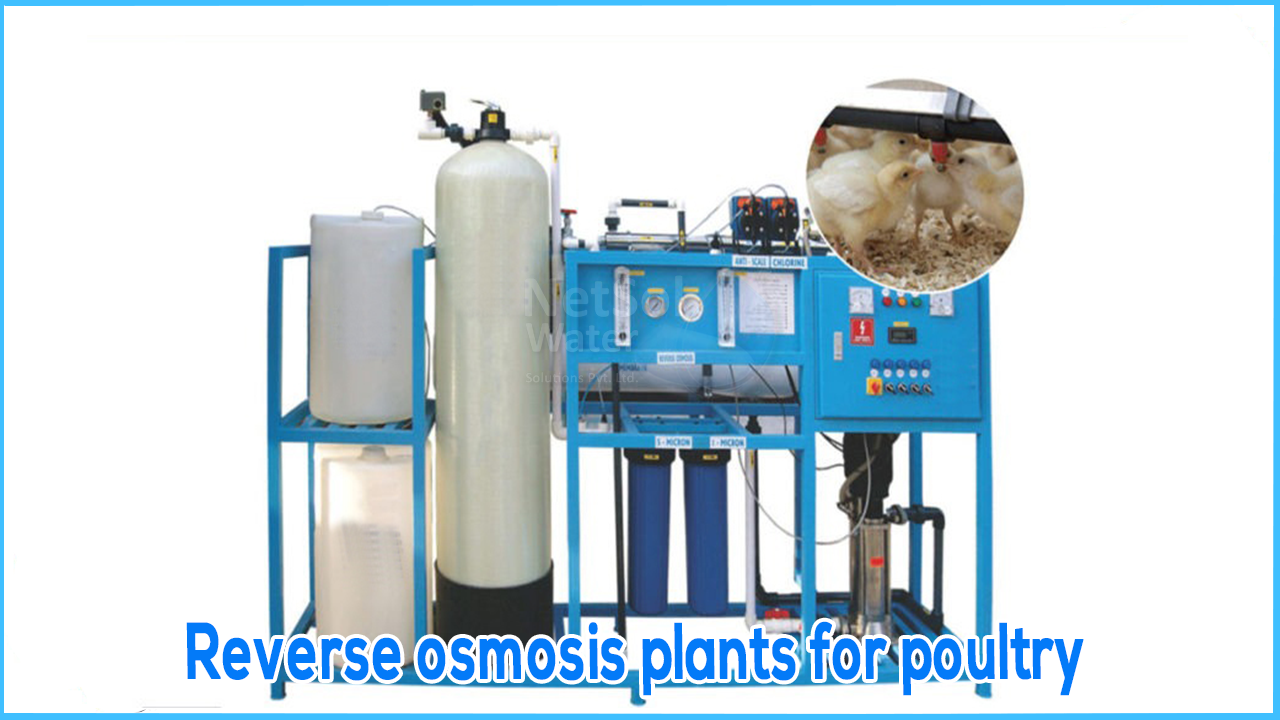Reverse osmosis plants for poultry
Purified drinking water is required in poultry farms for chicken farms to reduce illness and mortality. Meeting the demand for purified water for the birds is a difficulty, and a RO Plant is required to satisfy water quality standards in the poultry farm, because the quality of drinking water is directly linked to the healthy growth of the birds, which is eventually tied to the farm's profit. All this requires highest quality RO Plant to meet all of the needs for healthy, disease-free avian growth.
WHY WATER QUALITY IS IMPORTANT IN POULTRY?
Water is a crucial component of poultry's nutrition.
- 1. Under normal circumstances, chickens will drink twice as much water as they eat.
- 2. Water is a nutrient that softens food and transports it throughout the body.
- 3. It aids in the design and absorption of information.
- 4. It cools the body by evaporating through the lungs and air sacs of the bird.
- 5. Water aids in the removal of trash.
- 6. It helps to keep joints lubricated.
- 7. It is a key component of blood and an essential medium for a variety of chemical reactions that aid in the production of meat and eggs.
- 8. Poor water quality can stifle growth, reduce egg production, and result in low-quality eggs.
- 9. The presence of sulphate and copper concentrations in the water, as well as compatibility with potassium, chloride, and calcium, are all favorably connected with feed conversions.
- 10. Bacteria has a negative impact on body weight, while water hardness and dissolved oxygen have a beneficial impact.
ADVANTAGES OF A POULTRY RO PLANT
1. Reduces the likelihood of birds contracting an illness that is already present.
2. Reduces the death rate of birds by a significant amount.
3. Contributes to the earnings of the poultry farm owner by supplying clean, wholesome water, which is essential for the bird's growth.
MEASURING DIFFICULTIES IN WATER QUALITY STANDARDS FOR POULTRY
Some of the standard measuring criteria used to assess human portable water quality, such as pH, hardness, and electrical conductivity, are ineffective in forecasting poultry performance.The concentration of hydrogen ions in a solution (pH) has no bearing on the buffering capacity of the solution or the identity and number of individual ions.On heated surfaces, hardness indicated a proclivity for soap precipitation or scale formation.Electrical conductivity measures total mineral (TDS) load but does not allow for specific ion analysis.
What one truly needs to know is the calcium and/or magnesium concentration in one's body.Poor water quality can stifle growth, reduce egg production, and result in low-quality eggs.The presence of sulphate and copper concentrations in the water, as well as compatibility with potassium, chloride, and calcium, are all favorably connected with feed conversions.
Skipping all this in mind, it is always advised by the experts that the reverse osmosis is very important for water used in poultry farms and this increases the role of RO plants in poultry farms as well.




